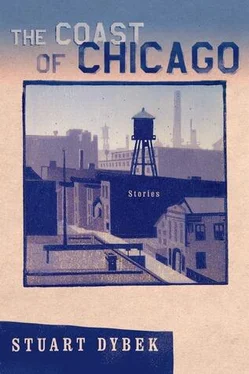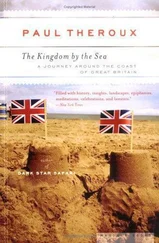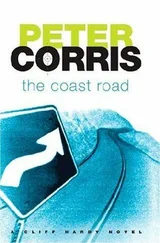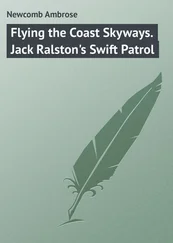The dawn rises,
Uuuhhh,
Like sick old men,
Oh, Lord,
Playing on the rooftops in their underwear,
Yeah…
Back to blight.
It was a saying that faded from my vocabulary, especially after my parents moved to Berwyn. Then, some years later, after I quit my job at UPS in order to hide out from the draft in college, the word resurfaced in an English-lit survey class. Maybe I was just more attuned to it than most people ordinarily would be. There seemed to be blight all through Dickens and Blake. The class was taught by a professor nicknamed “the Spitter.” He loved to read aloud, and after the first time, nobody sat in the front rows. He had acquired an Oxford accent, but the more excitedly he read and spit, the more I could detect the South Side of Chicago underneath the veneer, as if his th ’s had been worked over with a drill press. When he read us Shelley’s “To a Skylark,” which began “Hail to thee, blithe spirit,” I thought he was talking about blight again until I looked it up.
One afternoon in spring I cut class and rode the Douglas Park B back. It wasn’t anything I planned. I just wanted to go somewhere and think. The draft board was getting ready to reclassify me and I needed to figure out why I felt like telling them to get rammed rather than just saying the hell with it and doing what they told me to do. But instead of thinking, I ended up remembering my early trips back from the North Side, when I used to pretend that Debbie Weiss was riding with me, and when I came to my stop on Twenty-second Street this time it was easier to imagine how it would have looked to her — small, surprisingly small in the way one is surprised returning to an old grade-school classroom.
I hadn’t been back for a couple of years. The neighborhood was mostly Mexican now, with many of the signs over the stores in Spanish, but the bars were still called the Edelweiss Tap and the Budweiser Lounge. Deejo and I had lost touch, but I heard that he’d been drafted. I made the rounds of some of the bars looking for his song on the jukeboxes, but when I couldn’t find it even in the Carta Blanca, where nothing else had changed, I gave up. I was sitting in the Carta Blanca having a last, cold cerveza before heading back, listening to “CuCuRuCuCu Paloma” on the jukebox and watching the sunlight streak in through the dusty wooden blinds. Then the jukebox stopped playing, and through the open door I could hear the bells from three different churches tolling the hour. They didn’t quite agree on the precise moment. Their rings overlapped and echoed one another. The streets were empty, no one home from work or school yet, and something about the overlapping of those bells made me remember how many times I’d had dreams, not prophetic ones like Ziggy’s, but terrifying all the same, in which I was back in my neighborhood, but lost, everything at once familiar and strange, and I knew if I tried to run, my feet would be like lead, and if I stepped off a curb, I’d drop through space, and then in the dream I would come to a corner that would feel so timeless and peaceful, like the Carta Blanca with the bells fading and the sunlight streaking through, that for a moment it would feel as if I’d wandered into an Official Blithe Area.
The usher scans the credits for his name.
His profession is a hush.
But someday the story will be a legend: how he was discovered, just an ordinary kid off the streets, watching a factory burn down. It was the theater manager who spotted him in that nearly faceless crowd of gapers that disasters assemble. It was the theater manager who later explained to him that out of all the spectators he was the only one with the haloed profile of a pyromaniac, that in a black-and-white night the flames had played technicolor on his face.
He didn’t mention it to the theater manager then, but he wasn’t used to people speaking to him quite so dramatically.
“I think you got that something special, kid. Come down to the theater tomorrow, 11:00 a.m. sharp. You’ll start the matinee.”
That was it. It was that simple.
“You like Bugs Bunny, kid?”
“Yeah, I like Bugs.”
“Bugs, huh, first-name basis, huh? I like your brass, kid. You’re gonna do just fine.”
They gave him a flashlight that glowed like an electric rose. Opened the usher’s wardrobe to him, where the maroon uniform hung: an epauleted jacket with gold braid like something Brando might wear as Mr. Christian. So he became first mate in the navy of night. Him, the kid who watched fires as if he set them, whose other costumes had been altar boy, newspaper boy, and all-American boy as Mickey Rooney might have played it.
They taught him to tread softly on popcorn, to become a shadow as transparent as soundtrack music so that his corporeal body never eclipsed the projectionist’s beam.
They taught him how to slide among lovers, taught him the swan dive — a daredevil merger of Fred Astaire and Tarzan — from the balcony over the audience of dreamers dreaming their one dream, taught him to glide above their trance searching for an empty seat.
So he became nocturnal, a member of a secret society that knew itself exiled from the screen, but like outtakes remained part of the movie.
The film that rumor has made the dernier cri of this year’s festival is finally screened.
It begins without credits, challenging the audience from its opening frame. Not only has it been shot in black and white, but the black and white do not occur in usual relationships to one another. There is little gray. Ordinary light has become exotic as zebras.
Perhaps in the film’s native country they are not familiar with abstract reductions such as black and white. There, even vanilla ice cream is robin’s-egg blue, and licorice almost amethyst when held to the sun. No matter what oppressive regime, each day vibrates with the anima of primitive paintings — continual fiesta! As ambulances siren, they flash through color changes with the rapidity of chameleons. In the modern hospital, set like a glass mural against the sea, ceiling fans oscillate like impaled wings of flamingos above the crisp rhythm of nurses.
Black and white are not native to these latitudes. And gray requires the opaque atmosphere of Antwerp or Newcastle, Pittsburgh or Vladivostok, requires the industrial revolution, laissez-faire, imperialism, Seven Year Plan, Great Leap Forward, pollution, cold war, fallout, PCB, alienation….
Nor does the film appear to be alluding to the classic black-and-white films of Fritz Lang, King Vidor, Orson Welles. Nor to the social realism of the forties or neo-realism of the fifties. In fact, the only acknowledged influence is an indirect one, that of an obscure poem by Victor Guzman, the late surrealist dentist of Chilpancingo.
Trees, for example, are blinding white, rather than the darknesses so often etched against a dying sky.
Shade is white.
Fruit is white.
Asphalt roads are white.
It is the windowpanes through which one sees them that are black. Smoked with kerosene or smeared with shoe polish for secrecy or air-raid blackouts, who can determine?
It is true that at times the film closely resembles a negative — the moon a sooty zero in a silver nitrate night. But the gimmick of shooting in negative is used with restraint. It’s obvious that the filmmakers are after something beyond the simple reversal of the values of light.
Take the clouds — plumed, milky black in an albino, noon sky. But are they clouds? Or the smoke from a burning village, bombs, an erupting volcano?
In another sequence, an execution, there is a close-up of bullets being x’d to make the heads dumdum. The lead is white. And later, when the flour sack hoods are removed from the prisoners, the wounds are white. The camera pans along the riddled convent wall. In the distance, mountains rise tipped with anthracite. To put it another way, black is not meant to define white, nor vice versa.
Читать дальше












